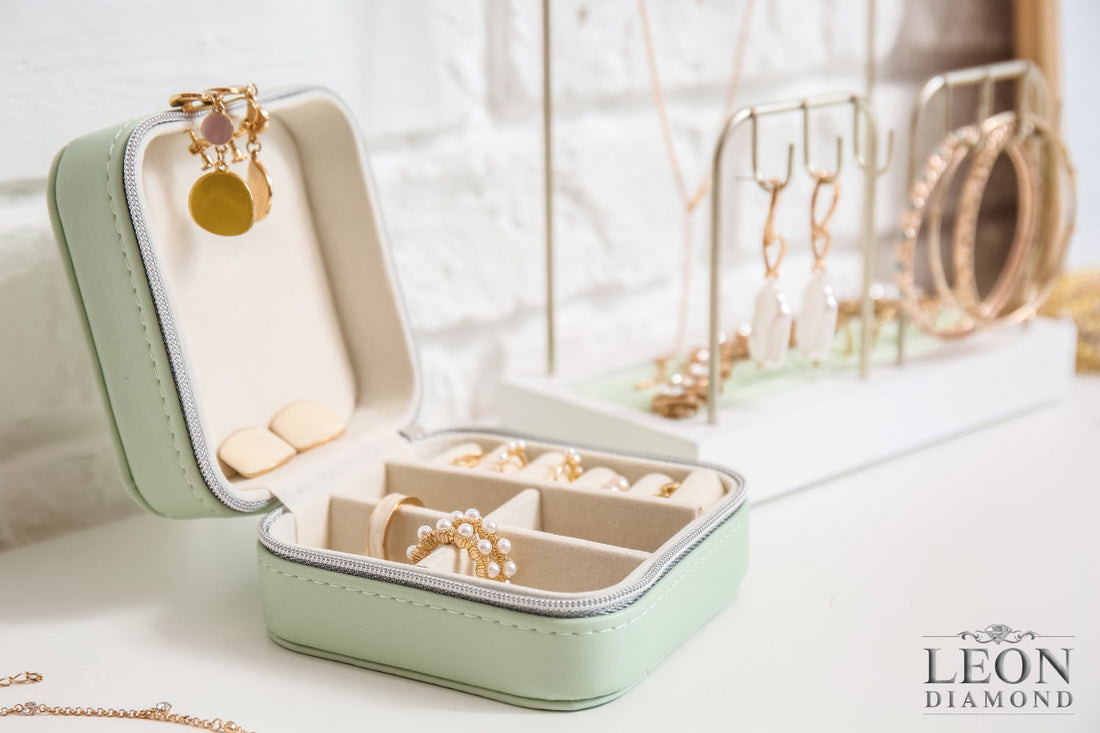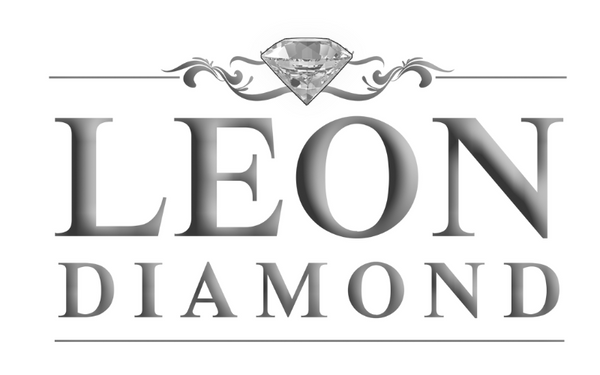
The Influence of Art Deco on Modern Jewelry Styles
Share
Emerging in the 1920s, Art Deco revolutionized jewelry with bold geometry, vibrant colors, and luxurious materials. Born amid post-World War I optimism, it celebrated modernity, melding exotic influences with sleek sophistication. Its hallmarks, symmetry, enamel accents, and gemstone brilliance inspire today's designers, who reinterpret its motifs for eco-conscious, tech-savvy consumers. From statement necklaces to minimalist rings, Art Deco's fusion of glamour and innovation resonates across jewelry trends.
This exploration reveals how the timeless elegance of Art Deco influences contemporary jewelry, creating a legacy of artistry and modernity. Distilling the movement's defining characteristics, we illuminate its enduring impact on form, function, and cultural expression.
Origins of Art Deco: A Cultural Revolution
Art Deco, flourishing from 1925 to 1939, emerged in Paris as part of the broader Art Deco movement. Post-World War I prosperity fueled a desire for luxury, with jewelry embracing bold, streamlined forms inspired by industrial progress and exotic cultures, such as Egypt and Asia. Designers such as Cartier and Van Cleef & Arpels pioneered this aesthetic, creating pieces that seamlessly blended opulence with precision. This cultural shift, driven by technological advances and global exploration, set the stage for Art Deco's enduring influence on jewelry design.
Defining Characteristics: Geometry and Glamour

Art Deco jewelry is defined by its geometric precision, vibrant colors, and luxurious materials. Symmetrical patterns, inspired by skyscrapers and machinery, featured angular shapes like chevrons and sunbursts. Enamel accents in bold hues, black, red, green, contrasted with sparkling diamonds, emeralds, and sapphires, often in pavé or calibre-cut settings. Platinum, favored for its strength, allowed intricate filigree and milgrain detailing. These elements, blending glamour with modernist restraint, created a distinctive style that remains a blueprint for contemporary jewelry's bold aesthetic.
Art Deco in the Roaring Twenties: A Social Catalyst
The 1920s social landscape, marked by jazz, flappers, and economic boom, amplified Art Deco's diamond jewelry trends. Women, newly liberated, embraced bold, androgynous styles, such as long pearl sautoirs and diamond cocktail rings, reflecting their newfound independence. High society's demand for opulence drove commissions of lavish parures, worn at galas and speakeasies. Archaeological discoveries, such as the tomb of Tutankhamun in 1922, sparked an Egyptian revival, with scarab and lotus motifs adorning necklaces (Egyptian Revival decorative arts). This cultural dynamism embedded Art Deco's exuberance in jewelry, influencing today's statement pieces.
Transition to Modernity: Art Deco's Evolution
By the 1930s, Art Deco had adapted to the Great Depression, striking a balance between opulence and restraint. Jewelers like Tiffany & Co. introduced more affordable materials, such as onyx and cora, while maintaining geometric elegance. Streamlined designs, inspired by aerodynamic machinery, emphasized clean lines and monochromatic palettes. The rise of Hollywood glamour, with stars like Greta Garbo wearing Art Deco jewels, globalized the style. This evolution, blending accessibility with sophistication, laid the groundwork for the revival of Art Deco in modern minimalist and vintage-inspired jewelry.
Revival in the Late 20th Century: Nostalgia and Innovation
Art Deco experienced a resurgence in the 1980s, fueled by nostalgia and economic recovery. Designers revisited geometric motifs, with diamond earrings and cuffs echoing 1920s glamour. Jewelers like David Webb reintroduced enamel and coral, blending retro aesthetics with modern craftsmanship. The 1980s fascination with power dressing aligned with Art Deco's structured elegance, seen in shoulder-dusting chandelier earrings. This revival, supported by auction houses selling vintage pieces, rekindled interest in Art Deco's bold forms, influencing contemporary designers to incorporate its motifs into sustainable, tech-enhanced jewelry (Cooper Hewitt: Art Deco Revival).
Art Deco in 2025: Modern Interpretations
In 2025, the influence of Art Deco is evident in jewelry that seamlessly blends heritage with innovation. Designers like Shaun Leane create geometric pendants with laser-cut diamonds, echoing the precision of Art Deco. Sustainable brands utilize recycled metals and lab-grown gems in sunburst rings, aligning with eco-conscious trends (Jewelers of America, 2025 Sustainability). Bold enamel accents, inspired by Cartier's 1920s palette, adorn minimalist necklaces, while pavé-set cocktail rings reflect the sparkle of Art Deco. Technology, like 3D printing, enables intricate filigree, merging Art Deco's legacy with futuristic craftsmanship.
Cultural and Economic Impact: A Global Legacy
Art Deco jewelry drove economic growth through global trade and the refinement of craftsmanship. The 1920s demand for exotic gems, such as jade and lapis lazuli, expanded trade routes from Asia to Europe. Luxury jewelers employed artisans skilled in enameling and gem cutting, thereby boosting local economies. Culturally, Art Deco's universal appeal, blending Eastern and Western motifs, fostered cross-cultural exchange, seen in exhibitions like the 1925 Paris Exposition. Today, its global legacy inspires designers to create inclusive, culturally resonant pieces, reinforcing Art Deco's economic and artistic influence.
Art Deco's Influence on Bridal Jewelry
The elegance of Art Deco profoundly shapes modern bridal jewelry. Halo engagement rings, inspired by 1920s diamond clusters, remain popular for their vintage charm (Natural Diamond Council). Geometric tiaras, reminiscent of Van Cleef & Arpels' designs, bring a modernist flair to weddings. Brides favor long, layered tennis necklaces reminiscent of sautoirs, often with emerald or sapphire accents. These pieces reflect Art Deco's ability to elevate bridal aesthetics, offering couples a way to honor history while embracing contemporary style.
Future of Art Deco Influence: Sustainability and Technology

Looking ahead, the influence of Art Deco will evolve in tandem with sustainability and technology. Innovations like AI-driven design and 3D printing enable intricate geometric patterns, thereby enhancing the precision of Art Deco. As consumers prioritize individuality, bespoke Art Deco pieces, customizable with vibrant enamels or unique gem cuts, will thrive. This fusion of heritage, sustainability, and innovation ensures Art Deco's enduring relevance in future jewelry trends.
Frequently Asked Questions
What is Art Deco jewelry?
Art Deco jewelry, from the 1920s to the 1930s, features geometric shapes, vibrant enamels, and luxurious gems, blending modernity with opulence.
How did Art Deco influence modern jewelry?
Its bold geometry and vibrant colors inspire contemporary designs, from minimalist rings to statement necklaces.
Which designers pioneered Art Deco jewelry?
Cartier, Van Cleef & Arpels, and Boucheron introduced iconic techniques, such as Tutti Frutti and Mystery Setting.
Why is Art Deco popular in bridal jewelry?
Its elegant halo rings and geometric tiaras offer timeless sophistication, blending vintage charm with modern flair.
How does sustainability shape Art Deco-inspired jewelry?
Designers utilize recycled metals and lab-grown gems, preserving Art Deco's aesthetic while incorporating eco-conscious practices.
What role does technology play in Art Deco designs?
3D printing and AI-driven design enable intricate geometric patterns, enhancing Art Deco's precision in 2025.
Leon Diamonds and the Future of Art Deco Elegance
Art Deco's bold geometry, vibrant colors, and luxurious craftsmanship have shaped modern jewelry styles, from the opulence of the 1920s to the sustainable elegance of the present day. Its influence, born in a cultural revolution, persists in geometric rings, enamel accents, and bridal designs, blending heritage with innovation. As technology and eco-consciousness redefine jewelry, the timeless appeal of Art Deco endures, inspiring designers and consumers alike. Leon Diamonds celebrates this legacy, crafting pieces that capture the glamour and precision of Art Deco, ensuring its influence shines brightly in contemporary design, connecting past artistry with future aspirations.
